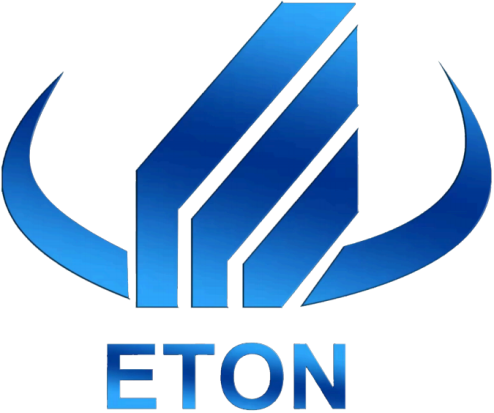How is the LED lighting industry performing in the first half of 2017?
Published Time:
2021-08-04
China's lighting industry has a large market, and the entry barrier for low-end products is relatively low. Especially after the rise of LED lighting, a large amount of social capital has poured in, resulting in a relatively low industry concentration and fierce market competition.
China's lighting industry has a large market space and relatively low barriers to entry for low-end products. Particularly after the rise of LED lighting, a large amount of social capital has poured in, resulting in a relatively low industry concentration and fiercely competitive market structure.
International leading brands such as Philips, Osram, and General Electric, and domestic leading brands such as Leishi Lighting and Op Lighting, occupy the high-end market with their years of brand advantages, extensive sales networks, strong technical R&D capabilities, and strict and stable product quality. Many small and medium-sized lighting manufacturers have relatively low product technology maturity and quality stability, relatively low product added value, and serious product homogeneity, relying mainly on price competition to compete in the low-end market.
Meanwhile, in the emerging LED lighting market, due to strong government policy support, the entire LED lighting industry is developing rapidly. In addition to traditional lighting companies leveraging their competitive advantages in the lighting industry to enter the LED lighting market, they also face competitive pressure from LED upstream and downstream industry chain companies using their LED chip, packaging, and application technology and production advantages to gradually extend to lighting products.
According to relevant data analysis, globally, the number of companies participating in each segment of the LED industry chain is pyramid-shaped. In 2016, the global LED industry market size reached 699.6 billion yuan, an increase of 8.6% compared to 2015, the lowest increase in four years, and is expected to continue to decline in the next few years, but the overall upward trend remains unchanged. China's LED industry is expanding steadily, and industry structure differentiation is becoming increasingly apparent.
At the beginning of this year, this newspaper also made a prediction about the LED industry: downstream market expansion, LED price increase. Affected by the macroeconomic environment, the overall LED industry is relatively optimistic, and downstream demand will also bear greater industry pressure. In addition to coping with the predicament of product homogeneity, it also faces the wave of price increases from upstream industries. The accelerated concentration of upstream industries and the improvement of production capacity have led to the demand entering a state of stable growth. Therefore, if the industry begins to recover, the first to receive significant benefits will be upstream enterprises, which will in turn drive the development of downstream industries.
It's no accident that listed companies saw red in the first quarter.
Just as the industry was optimistic at the beginning of 2017, the LED industry has begun to enter a state of rapid recovery: According to the first-quarter reports of major LED listed companies, the performance of LED-related listed companies on the A-share market has generally improved this year. Nearly 90% of companies have seen net profit growth, and more than 30% have achieved multiple times profit growth. For example, Qianzhao Optoelectronics' net profit in the first quarter of 2017 increased by 7598.90% year-on-year.
In fact, we can see some commonalities from the performance analysis of several listed companies with the highest growth. Qianzhao Optoelectronics achieved a net profit of 41.57 million yuan with such an amazing growth rate. Qianzhao Optoelectronics stated that the significant increase in profit is due to the company's investment in blue and green light projects, achieving significant improvements in production processes and yield; the output of chips and epitaxial wafers has also increased.
Huacan Optoelectronics, which achieved a net profit of 80.78 million yuan in the first quarter, believes that the commissioning of some newly added production capacity and the improvement of the efficiency of technical transformation equipment have led to a significant increase in chip sales; and the newly acquired sapphire business module has further improved the company's overall revenue level.
Zhuming Technology, whose net profit growth is also amazing, stated that it will continue to upgrade and optimize product technology, and is therefore very confident in its performance in the second quarter. It is not difficult to see that the huge growth achieved by these companies is by no means accidental, but rather the result of years of accumulated strength. Improving production capacity through technological innovation not only benefits their own potential businesses, but also promotes the development of existing projects and expands profit margins.
The capital market has become a must-contested place for LED lighting companies.
The success of LED listed companies in generating higher profits through effective technological R&D is inseparable from the "contribution" of the capital market. China's LED industry has gradually shifted from initial technology R&D, policy support, and market-driven development to capital-driven development. More and more companies have boarded the express train of capital to achieve leapfrog development. Sanxiong Jiguang, a newly listed company this year, also performed well in the first quarter, achieving a net profit of 22.21 million yuan, a year-on-year increase of 35%. In order to maintain profit growth, Sanxiong Jiguang stated that it will increase R&D investment on the one hand and promote project construction based on the actual situation on the other hand.
In the LED industry, valued at hundreds of billions of yuan, companies seem to have achieved sustainable growth through listing and financing. For growing LED companies, listing may be a benign "accelerator". According to the latest news, Ju Can Optoelectronics and Huati Lighting, among other LED lighting companies, will also pass the review of the China Securities Regulatory Commission and be listed this year.
Smart lighting still needs to be observed.
As for the intelligent trend that has been of concern to all walks of life, it may be entering a "bottleneck period", and smart lighting is no exception. Although last year, major giants in various fields spared no effort to enter the smart lighting market, in the final analysis, the LED industry is developing on the road of returning to quality, and many functional factors may arise due to immature technology.
Due to the low technical barriers of LEDs, companies can easily enter the market, resulting in the LED lighting industry being in an era of low prices and low profits. Therefore, finding new breakthroughs has become a top priority for LED companies. From the national level, smart lighting has long been an area encouraged by national industrial policies and energy policies; from a technological point of view, due to the optoelectronic characteristics of LEDs, LEDs are easier to adjust the brightness, color temperature, and color of light, so smart lighting can only be realized on LEDs; from the consumer's point of view, humanized smart lighting is an inevitable pursuit of consumers for home service upgrades; from the market development space point of view, the smart lighting market is a blue ocean, and companies with innovative technologies and understanding of internet development models are more competitive. This is a good opportunity to eliminate low-quality products and bring lighting back to the center of the home.
From the cooperation agreement signed between Philips Lighting and Huawei, to the joint statement signed by Xiaomi and lighting companies, announcing their joint efforts to promote the development of the smart lighting industry. In recent years, giants in various fields such as Haier, ZTE, JD.com, Baidu, Alibaba, and Meizu have begun to enter the smart lighting market because smart lighting is no longer a matter of the traditional lighting industry, but a new field that integrates communication technology, control technology, and IT technology. The reason why many well-known companies are able to cross-border and join the smart lighting market is that only smart lighting systems that incorporate cutting-edge technologies can achieve personalized control of all lighting equipment in the entire indoor space, such as automatic adjustment, voice control, and scene lighting. In addition, with the large number and distribution range of lighting equipment, they have the advantage of obtaining big data, laying the foundation for more high-value-added home services. From self-driving cars to VR/AR, the intelligent age has unknowingly entered our lives, and the future will usher in an intelligent revolution, and the construction of smart lighting systems will add new brilliance to the smart lighting field.





